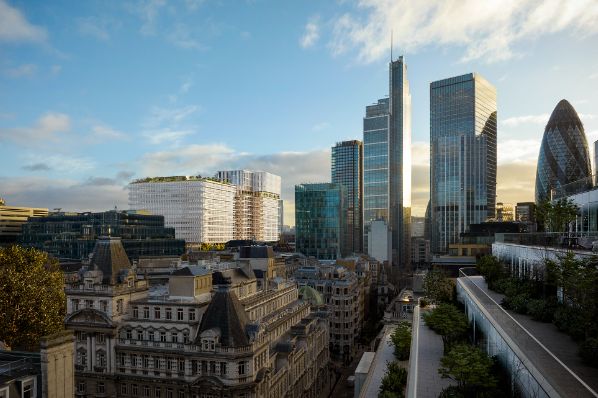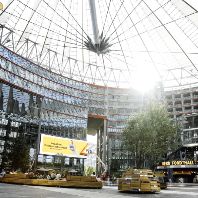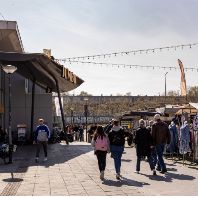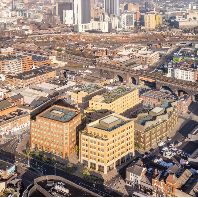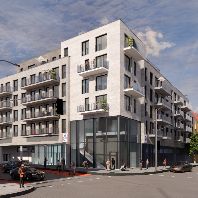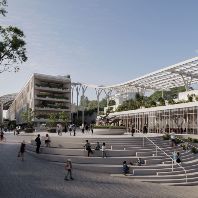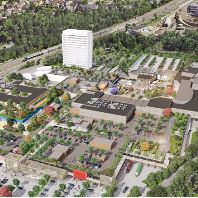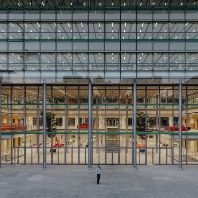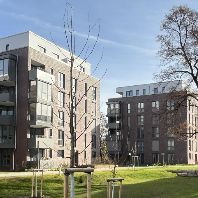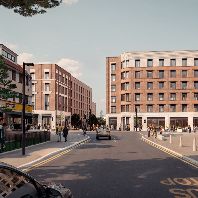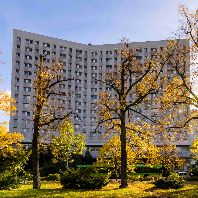Sellar, MTR, and Network Rail have submitted a joint planning application to the City of London Corporation for proposed vital upgrades to transform Liverpool Street station. The €1.7bn (£1.5bn) vision for Liverpool Street station has been developed in collaboration with Pritzker Prize-winning architectural practice Herzog & de Meuron and will create a world-class transport hub and landmark seven-days-a-week destination, with new retail and leisure facilities for visitors, passengers and the local community. The designs being submitted follow several years of working with the City of London Corporation as well as ongoing consultation with heritage organisations and other key stakeholders, including three public exhibition events, resulting in the proposals incorporating a number of design changes and improvements.
Despite being the capital’s main transport hub, significant changes are required for the station to become fully inclusive. It is one of the most difficult to access for people with disabilities and offers a poor passenger experience for those with small children and luggage, with only one accessible lift serving the mainline station and no step-free access to most London Underground platforms. When the last upgrade to the station was completed in the early 1990s there was no expectation that passenger numbers would grow. Liverpool Street is the busiest station in the UK by footfall, with up to 135 million people using the station and concourse area annually in recent years. In spite of high passenger volumes, it operates with just half the concourse space of similar London stations which results in overcrowding during peak times.
The creation of a new landmark office and hotel enables a comprehensive redevelopment to deliver €511m (£450m) of vital station upgrades and customer requirements, resulting in a greatly improved passenger experience at no cost to the tax or farepayer. Passengers are at the centre of the proposals, and the design allows the station to remain open and operational throughout all phases of the project construction. The innovative net zero design creates over 800,000ft² of offices and around 160,000ft² of hotel space using the airspace above the 1990s elements of the station and 40 Liverpool Street. The office component of the development has been designed to address the lack of supply for modern Grade A space in the City of London with strong environmental and wellness credentials that can accommodate changes to working habits that have accelerated as a result of the pandemic.
The project also sensitively protects and celebrates the station and hotel’s unique historic features. The Victorian trainsheds will be restored and will not be touched or built over as part of this project. The newly proposed station concourse will celebrate these valuable heritage structures by opening up incredible new views of them throughout the station. Local and street-level views will be retained by visually setting back the commercial building comfortably from the historic façades of the Grade II* listed 40 Liverpool Street. The proposals include the creation of over 1.5 acres of public realm in and around the main station building and Hope Square as well as the pedestrianisation of Liverpool Street.
The highlight is a new public rooftop garden with natural planting, which has been designed to offer the local community new amenities and sports facilities that do not currently exist. A four lane, 25 metre City Lido heated by surplus heat from the offices will allow swimmers to enjoy open air swimming all year round and a padel court will become the first in the City of London. Both will be available to the public, including local schools; and a rooftop café, with outstanding views over the City and to St. Paul’s, will also be open to visitors.
A cultural and placemaking strategy has been at the forefront of the design of the public spaces to create a seven-days-a-week destination. Importantly, it ensures that the public realm is a dynamic and engaging place, with a range of activities and events that will draw visitors and serve as a hub for arts, entertainment, and community activities, creating a vibrant and lively environment. A new six-storey hotel at the top of the building will be a destination for international and domestic visitors, and includes a venue that can host conferences, talks, lectures, and live music. The hotel will continue to be part of the Hyatt’s Andaz brand, offering a quality hotel experience for the City of London.
James Sellar, Chief Executive at Sellar, said: “The upgrades to Liverpool Street station are essential in helping London maintain its status as a world-class city and encourage people back to the capital by significantly improving the experience for the station’s millions of users and commuters. The plans will create one of the most sustainable destinations in the Square Mile, including a rooftop garden and City Lido, both accessible to the public. The office, hotel and leisure components above the station will be designed with the highest environmental and wellness credentials and will enable the €511m (£450m) of vital station upgrades at no cost to passengers or the taxpayer. Our entire approach prioritises protecting and enhancing the historic elements of both the Great Eastern Hotel and of the station itself. The original Victorian railway sheds at Liverpool Street station will not be touched but will be celebrated by opening up new views to and through them.”
Robin Dobson, Group Property Director at Network Rail, said: “Our plans for Liverpool Street will create a new transportation hub and a seven-days-a-week retail and cultural destination in its own right. This comprehensive plan will ensure the redevelopment is accessible to all, forward-looking and meet the City of London’s needs. Liverpool Street station will stand as one of the great stations, fit for the 21st century. The current experience designed in the 1980s falls very short and needs to change. Our vision will guarantee that sustainable travel and an exceptional experience becomes the reality for future generations. We will move from an inaccessible and overcrowded station to one centred on people, ensuring an open, accessible destination for everyone.”
Steve Murphy, CEO at MTR UK said: “Our vision is to create a world-class gateway to our great capital. The upgraded station and surrounding environment will serve everyone who passes through, providing an inclusive, accessible, and transformative space. MTR has unique experience in rail-related property projects and is proud to be part of creating a sustainable landmark destination that will connect, build, and support thriving communities. Our proposal will greatly enhance the experience of passengers, visitors, and office workers. Importantly, the local community will also gain significant advantage from access to new facilities, cultural offerings, and unique public spaces both in and around the station.”
A decision by the City of London Corporation is expected in 2024.
